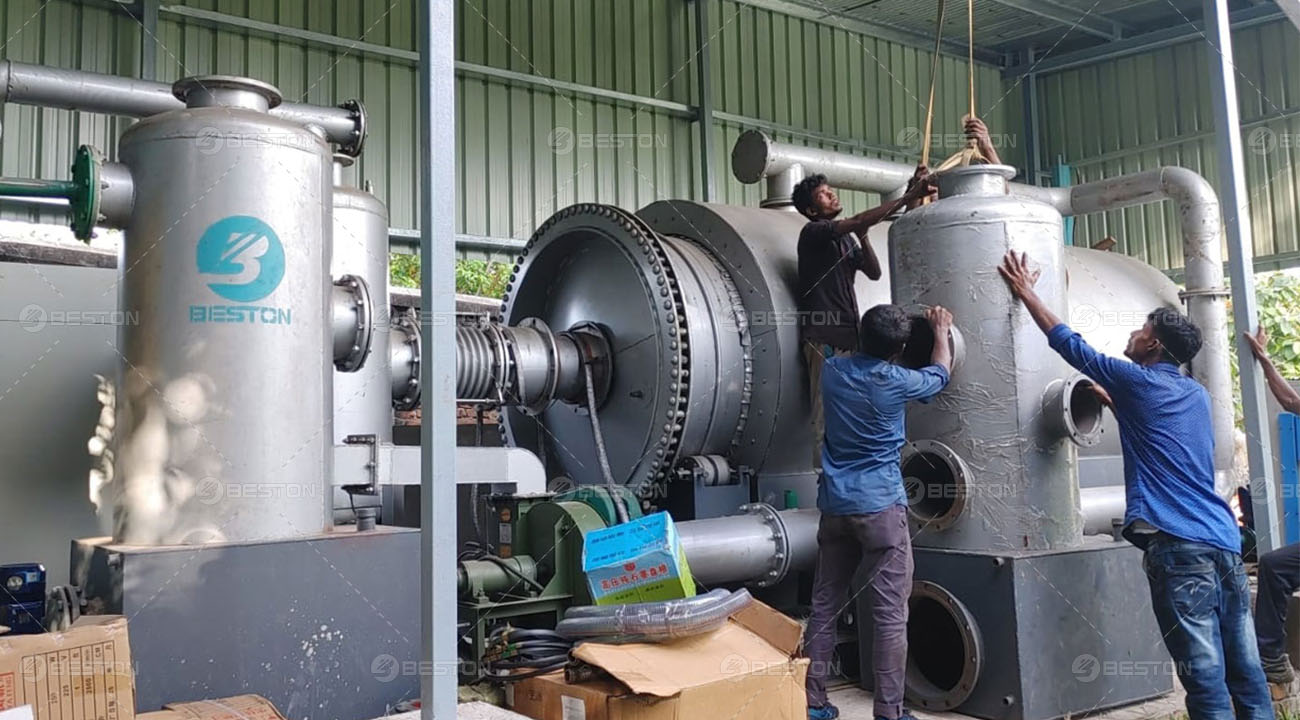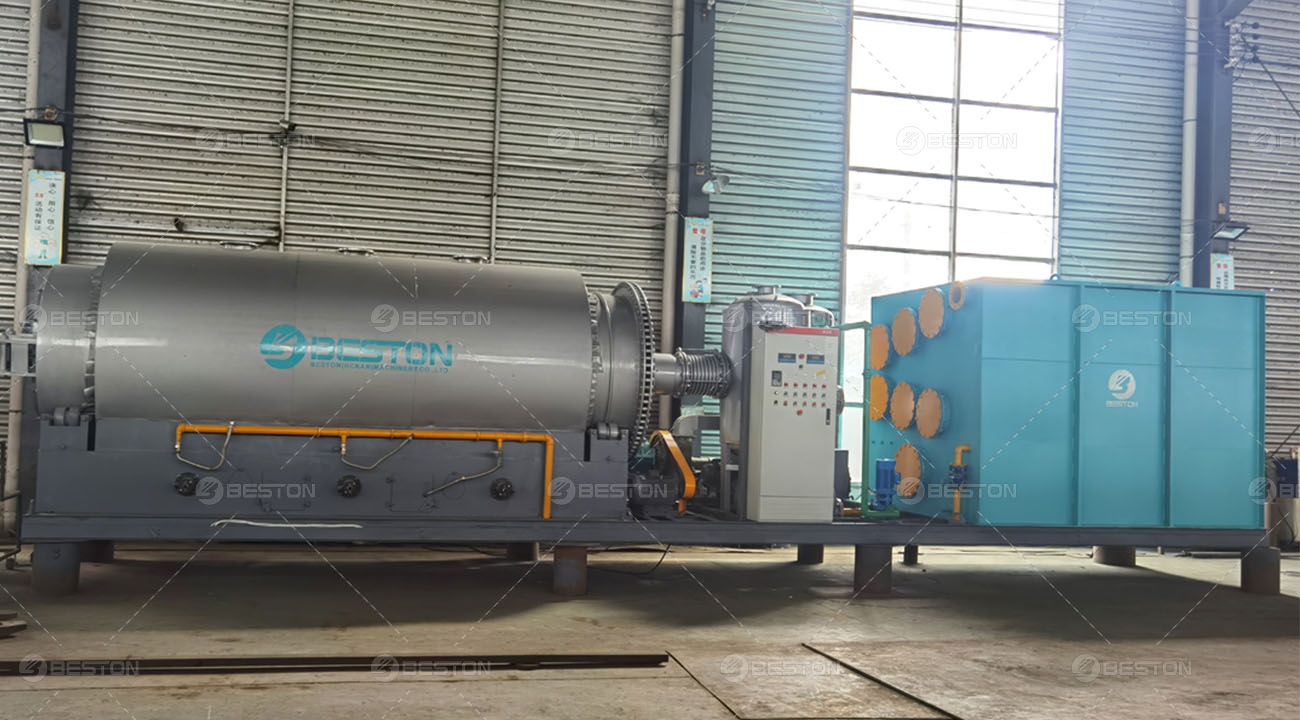In an era defined by environmental consciousness and resource scarcity, the world is seeking innovative solutions to transform waste into valuable commodities. At the forefront of this sustainable revolution are pyrolysis plants, cutting-edge machines that utilize the pyrolysis process to convert various types of organic materials into valuable products like fuel, chemicals, and char. This article delves into the intricate world of pyrolysis plants, from the underlying science to the practical applications and economic considerations.
Introduction to Pyrolysis Plant
Unveiling the Innovative Pyrolysis Process
Pyrolysis is a thermal degradation process in which organic materials are subjected to high temperatures in the absence of oxygen. This controlled environment triggers a complex series of chemical reactions, leading to the decomposition of these materials into gases, liquids, and solid residues. This process holds immense promise for reducing waste, curbing greenhouse gas emissions, and fostering a circular economy.
Significance of Pyrolysis in Sustainability
In a world grappling with the consequences of excessive waste generation and fossil fuel dependence, pyrolysis plant offers a ray of hope. By converting waste materials such as plastics, biomass, and rubber into valuable resources, these plants contribute to the reduction of landfills and the conservation of natural resources. Moreover, the process’s potential to yield biofuels and biochemicals presents a substantial step towards a cleaner energy landscape.
Understanding Pyrolysis Reactors
Pyrolysis Reactor Components and Functionality
At the heart of every pyrolysis plant lies the pyrolysis reactor, a meticulously designed vessel equipped with advanced heating mechanisms and intricate controls. The reactor facilitates the transformation of raw feedstock into useful end products by subjecting it to a carefully calibrated environment. The reactor’s inner workings, including heating coils, insulation, and temperature sensors, play a pivotal role in ensuring optimal conversion rates.
Diverse Types of Pyrolysis Reactors
Pyrolysis technology has given rise to a variety of reactor designs, each tailored to specific feedstock and operational requirements. Among these are fluidized bed reactors, rotary kilns, and vacuum pyrolysis reactors. Each type has its strengths and limitations, affecting factors such as reaction efficiency, product quality, and energy consumption. Selecting the appropriate reactor design is crucial to achieving desired outcomes.

Exploring Different Pyrolysis Plant Models
Mobile Pyrolysis Units: On-the-Go Sustainability
Innovative engineering has led to the development of mobile pyrolysis unit, allowing waste-to-resource conversion at the source. These compact, transportable systems are particularly beneficial for managing waste in remote areas or disaster-stricken regions. Their flexibility and ease of setup make them a practical solution for localized waste challenges.
Continuous Pyrolysis Plants: Seamless Efficiency
Continuous pyrolysis plants stand out for their uninterrupted operation, high throughput, and automation capabilities. These plants are designed for large-scale waste management, offering consistent product yields and reduced downtime. The integration of cutting-edge control systems ensures precise temperature regulation, enhancing both product quality and overall efficiency.
Unveiling Pyrolysis Plant Manufacturers
Pioneering Companies in Pyrolysis Technology
A handful of pioneering companies have emerged as leaders in the pyrolysis plant manufacturing landscape. These companies boast a deep understanding of pyrolysis science and engineering, driving innovations that redefine waste management. Their research and development efforts have led to enhanced reactor designs, improved energy recovery systems, and innovative end-product utilization.
Evaluating Manufacturer Credibility and Reputation
When considering an investment in a pyrolysis plant, it is essential to assess the credibility and reputation of potential pyrolysis plant manufacturers. Factors such as technological expertise, project portfolio, and client testimonials provide insights into a manufacturer’s track record. Collaborating with established manufacturers increases the likelihood of acquiring a reliable and efficient pyrolysis plant.
Calculating the Cost of Pyrolysis Plants
Factors Influencing Pyrolysis Plant Costs
The cost of a pyrolysis plant encompasses a range of factors, including reactor design, materials of construction, automation level, and auxiliary equipment. High-quality materials and advanced control systems contribute to higher upfront costs but often yield greater long-term efficiency and reliability.
Economic Viability and Long-Term Benefits
While the initial investment in a pyrolysis plant can be substantial, the long-term benefits are multifaceted. Revenue streams from valuable end products, waste management cost reductions, and potential government incentives contribute to the plant’s economic viability. When viewed through the lens of sustainability and resource conservation, pyrolysis plants emerge as not just financial assets, but as catalysts for positive environmental change. If you want to get the most cost-effective machine, you may wish to contact Beston Group. This is an experienced manufacturer.
In conclusion, the evolution of pyrolysis plants marks a significant step towards achieving sustainability in waste management and energy production. The integration of advanced reactor designs, meticulous process control, and economic considerations paves the way for a greener future. As industries and communities embrace the potential of pyrolysis technology, a harmonious balance between environmental preservation and economic progress becomes attainable.